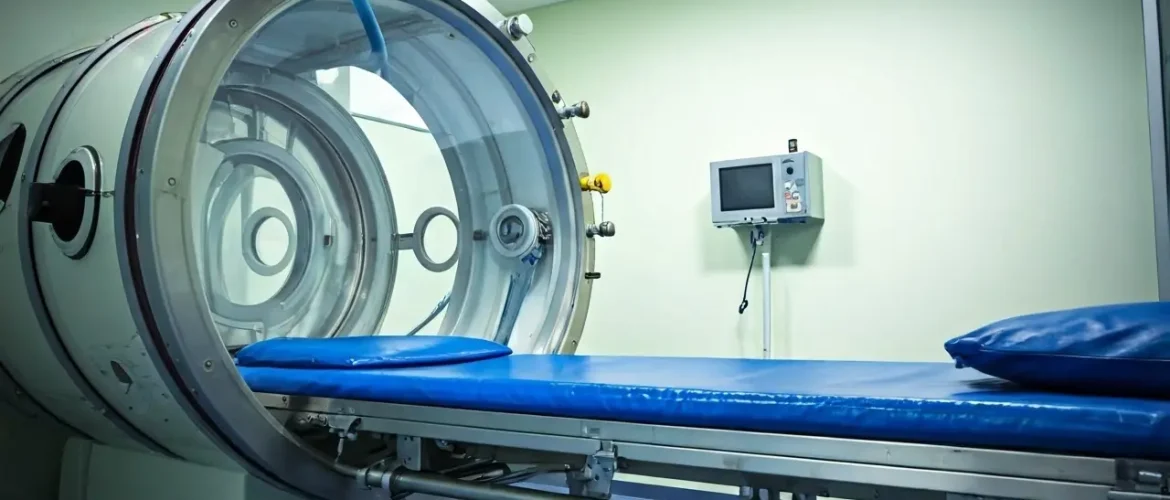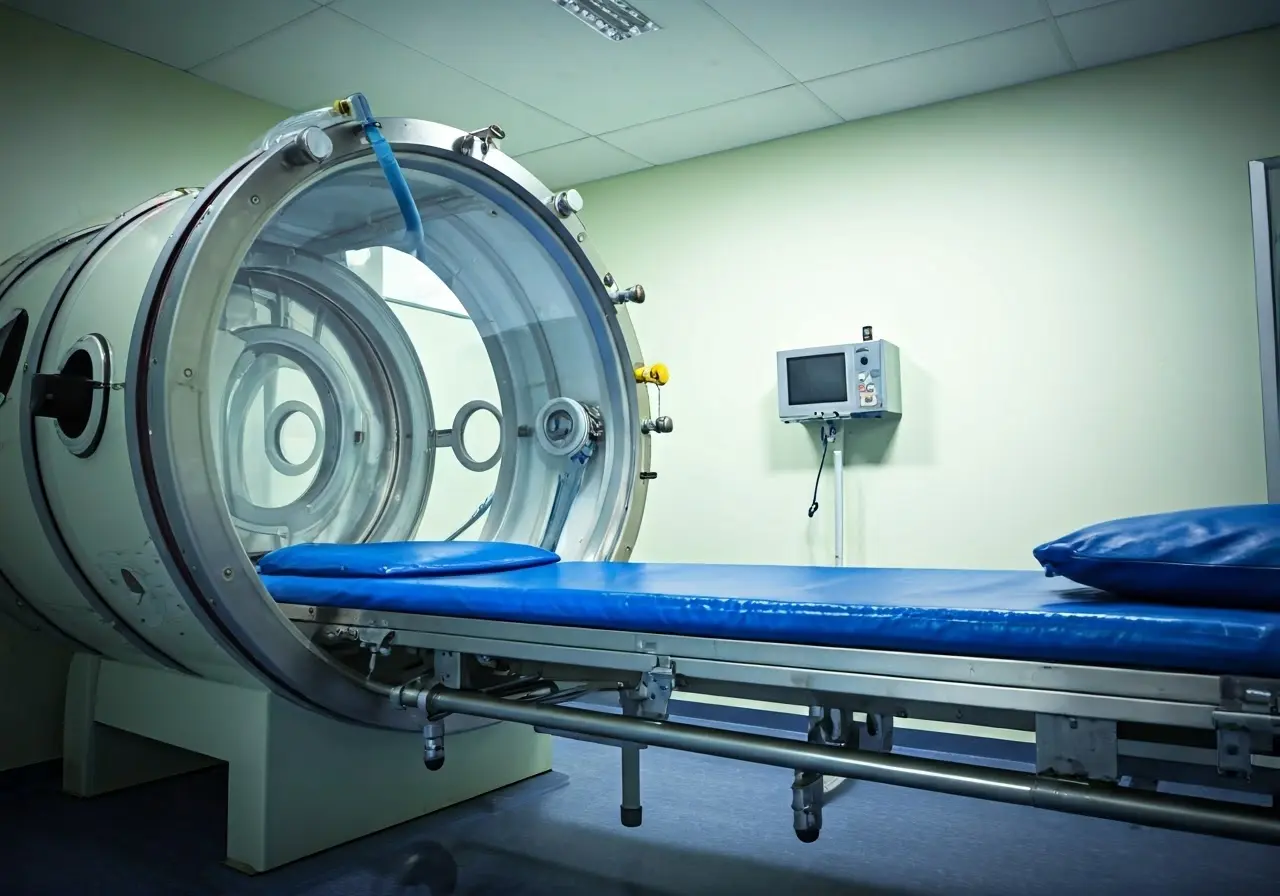Living with chronic pain can be challenging, impacting every aspect of your life. Many people are turning to Hyperbaric Oxygen Therapy (HBOT) as a natural and effective way to manage their pain. In this blog, we’ll explore the benefits of HBOT and how you can find ‘HBOT Near Me’ to start your journey toward pain relief.
Table of Contents
What is Hyperbaric Oxygen Therapy (HBOT)?
HBOT involves breathing pure oxygen in a pressurized chamber. This treatment originally was used for divers with decompression sickness, but it has since been found to have numerous medical benefits, including pain management.
The concept behind HBOT is grounded in increasing the amount of oxygen your blood can carry, which can accelerate the body’s healing process. Under normal conditions, our lungs extract oxygen from the air and deliver it to our tissues via the bloodstream. However, in a hyperbaric chamber, the air pressure is increased, allowing more oxygen to be absorbed and carried throughout the body. This heightened oxygen level helps with the regeneration of tissues, reduces inflammation, and can enhance immune function.
Furthermore, HBOT is not a one-size-fits-all treatment. The specific conditions it can treat are diverse, ranging from chronic wounds to severe infections. According to Johns Hopkins Medicine, HBOT can accelerate healing in conditions where tissues are starved of oxygen, such as diabetic foot ulcers, radiation injuries, and even certain infections.
How Does HBOT Work for Pain Management?
During an HBOT session, the increased oxygen levels in your blood can help to reduce inflammation and promote healing of damaged tissues. This can lead to significant pain relief, especially for conditions like arthritis, fibromyalgia, and sports injuries.
The concept of using HBOT for pain management is rooted in its ability to stimulate anti-inflammatory processes. By delivering higher doses of oxygen into the bloodstream, it helps to decrease the production of inflammatory compounds which are often responsible for chronic pain. According to a narrative review on ScienceDirect, HBOT can significantly reduce the activity of glial cells that contribute to chronic pain conditions like fibromyalgia.
Moreover, HBOT has shown promise in enhancing neuroplasticity, which is the brain’s ability to reorganize itself by forming new neural connections. This can be particularly beneficial for those suffering from neurological pain. Elevated oxygen levels can improve mitochondrial function in cells, which not only supports tissue repair but also modulates pain signals in the nervous system.
Research from Mayo Clinic has shown that HBOT can also facilitate the release of growth factors and stem cells which further aid in the healing process, amplifying the effects of traditional pain management therapies. This multi-faceted approach makes HBOT an exciting option for those seeking comprehensive pain relief.
Benefits of HBOT for Chronic Pain Sufferers
Some of the key benefits include: reduced inflammation, enhanced healing, increased oxygenation of tissues, and better overall health. People with chronic pain often notice an improvement in their quality of life after undergoing HBOT.
By increasing the oxygen levels in the bloodstream, HBOT can effectively diminish the painful symptoms associated with various chronic conditions. A multitude of patients report not only minimized inflammation but also a notable improvement in their mobility and overall physical function. As the therapy progresses, the improved oxygen delivery can stimulate better immune responses and quicker recovery from injuries, resulting in sustained pain relief.
Additionally, there is growing evidence that HBOT can expedite recovery times for sports injuries, allowing athletes to return to their peak performance faster. The ability of elevated oxygen levels to stimulate new blood vessel formation, a process known as angiogenesis, helps in repairing muscle and soft tissue injuries more efficiently. For many chronic pain sufferers, this translates to a decline in their dependency on pain medications and other more invasive treatments.
For individuals dealing with conditions such as diabetic foot ulcers or non-healing wounds, the benefits of HBOT can be particularly pronounced. According to Henry Chiropractic, this therapy is vital in cases where traditional healing methods fall short, providing a significant boost in tissue repair and reducing complications.
Ultimately, the comprehensive health benefits afforded by HBOT range from improved mental clarity and physical stamina to enhanced emotional well-being. When the body’s tissues are adequately oxygenated and functioning optimally, patients often experience a superior quality of life and a newfound sense of vitality.
Finding HBOT Near Me
If you decide to try HBOT, the first step is finding a reputable clinic near you. Use online resources, check reviews, and consult your healthcare provider to find a trustworthy facility offering HBOT.
Begin your search by looking for clinics that have certified and experienced healthcare professionals who specialize in hyperbaric medicine. Medical directories and websites like Mayo Clinic can provide an overview of what to expect from a high-quality HBOT facility. Ratings and reviews from other patients can also offer insights into the clinic’s reputation and the effectiveness of its treatments.
Another valuable resource can be local healthcare providers. Consulting with your primary care physician or a specialist can help you get referrals to reputable clinics. They can also provide guidance on considering factors like the clinic’s safety protocols, the qualifications of the staff, and the types of conditions they specialize in treating.
When evaluating clinics, look for comprehensive information about their treatment offerings and patient care practices. Facilities that have a strong focus on patient education and offer detailed consultations before initiating treatment tend to provide a better care experience. Don’t hesitate to ask about the types of chambers they use, the duration of typical treatment protocols, and any other concerns you might have.
What to Expect During an HBOT Session
Understanding what happens during a session can help ease any apprehensions. Typically, you will sit or lie in a chamber and breathe normally while the pressure increases. Sessions can last from 30 minutes to 2 hours, depending on your specific treatment plan.
As the pressure inside the chamber builds, you might feel a slight pressure in your ears, similar to what you experience during a flight’s ascent or descent. This pressure is a normal part of the process and it helps your body absorb the increased levels of oxygen. Techniques like yawning or swallowing can help equalize the pressure in your ears, making the session more comfortable.
Patients often describe feeling a sense of relaxation during their HBOT sessions. The environment within the chamber is designed to be calming, allowing you to either sit quietly or engage with activities like reading or listening to music. The increased oxygen levels can contribute to a feeling of tranquility, which many patients find beneficial, especially if they’re dealing with pain or anxiety.
After your first few sessions, you might start noticing improvements in your symptoms. However, the extent and timing of these benefits can vary based on the condition being treated and individual factors. Regular communication with your healthcare provider will ensure that your treatment plan is adjusted as needed to maximize its effectiveness.
Are There Any Side Effects?
HBOT is generally considered safe, but like any treatment, it can have side effects. These may include ear discomfort, temporary vision changes, and fatigue. Always discuss potential risks with your healthcare provider before starting HBOT.
Most side effects associated with HBOT are mild and manageable. Ear discomfort, the most common side effect, usually resolves quickly as your body adjusts to the pressure changes. Techniques mentioned earlier, such as swallowing or yawning, can help alleviate this issue.
Temporary vision changes are another potential side effect, often described as a slight worsening of nearsightedness. These changes typically resolve after completing the therapy. Patients are advised to monitor their eyesight and report any persistent changes to their healthcare provider.
Fatigue can sometimes occur after a session, as the body uses extra energy to process the elevated oxygen levels. This is generally short-lived, and many patients find that their energy levels improve significantly after a few sessions as their body adjusts to the therapy.
In rare cases, more severe side effects can occur, such as oxygen toxicity or lung injuries from prolonged exposure to high oxygen levels. These risks are minimized through careful treatment planning and monitoring by experienced healthcare professionals. Always follow the guidance of your healthcare team to ensure your treatment is both safe and effective.
For more detailed information about the potential side effects and how to handle them, you can consult reputable sources like the National Institutes of Health and make informed decisions based on their detailed findings.
Making the Choice for Pain Relief
Hyperbaric Oxygen Therapy offers a promising alternative for pain management, with its natural and non-invasive approach. If you’re looking for ‘HBOT Near Me,’ it’s worth considering all the benefits discussed to make an informed decision. Always consult with your healthcare provider to determine if HBOT is right for you.



